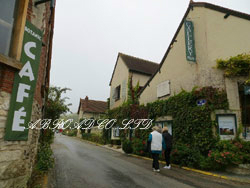oblique tear of medial meniscushouses for rent wilmington, nc under $1000
oblique tear of medial meniscus
- フレンチスタイル 女性のフランス旅行をサポート
- 未分類
- oblique tear of medial meniscus
https://www.webmd.com/pain-management/knee-pain/meniscus-tear-injury Nicholas Colyvas, MDClinical ProfessorDepartment of Orthopaedic Surgeryorthosurg.ucsf.edu 6 Types of Meniscus Tears - Orthopaedic Associates of Central Maryland Makris EA, Hadidi P, Athanasiou KA. Non-anatomic placement of a PCL reconstruction tibial tunnel is a reported cause of iatrogenic medial meniscal posterior root tears. The primary objective is to control the disease process to avoid the complications . I have a oblique grade 3 tear posterior horn of the medial meniscus. He/she will probably recommend surgery. https://www.verywellhealth.com/types-of-meniscus-tears-3862073, https://www.webmd.com/pain-management/knee-pain/meniscus-tear-injury, https://orthop.washington.edu/patient-care/articles/sports/torn-meniscus.html, A sensation that the knee is locked in place. Know why a test or procedure is recommended and what the results could mean. The doctors at the Orthopaedic Associates of Central Maryland are here to repair your knee problems, hip pain, and arthritis issues so you can get back to enjoying life. Procedure. By the time people reach their twenties or thirties, intrasubstance changes of the meniscus tissue are common. A meniscus tear is an injury to one of the bands of rubbery cartilage that act as shock absorbers for the knee. This is the most common type of meniscus tear. It is important to describe your symptoms accurately. If you have a meniscus tear, this movement may cause pain, clicking, or a clunking sensation within the joint. It is therefore quite important in treatment planning for the pre-operative MR to provide information that can be used to determine whether meniscal repair rather than partial meniscectomy is to be performed. OKeefe R, et al. This opening pushes the inside edge of your meniscus toward the middle of your knee. Torn meniscus symptoms Symptoms are usually sudden onset, however, can develop gradually over time. (8a) The curvilinear course of oblique tears often results in abnormal vertical signal (arrows) that progresses towards or away from the free edge of the meniscus on consecutive images, as seen in these sequential images of an oblique tear (arrows) of the posterior horn of the medial meniscus. This "C" shaped cartilage helps disperse impact and displace force exerted upon the knee while walking, running, and other mild to high-energy and impact motions. I have been diagnosed with a subtle oblique tear involving the posterior horn of the medial meniscus and extends to the inferior articular surface of the meniscus. Arthroscopic repair of isolated meniscal tears in patients 18 years and younger. By using our website, you consent to our use of cookies. Prospective evaluation of allograft meniscus transplantation: a minimum 2-year follow-up. I could not really walk on it. Absence of the medial meniscus (entire medial meniscal root tear) places large stresses on the ACL, the primary ligament that prevents anterior translation of the knee. Many meniscus tears will not need immediate surgery. Trauma to medial collateral ligament usually also involves medial meniscus. Both of these factors increase contact forces across the joint, leading to accelerated osteoarthritis and predisposing the patient to the development of subchondral insufficiency fractures.7. Regular exercise to restore your knee mobility and strength is necessary. A lateral meniscus tear (torn meniscus) is a tear of the semicircular fibrous cartilage discs in the knee. AJSM 2003; 31:216-220. 3rd edn. w/severe pain? These are the horns. Typically, complex tears are not treated with meniscus repair due to their complex nature. Although a successful outcome of a meniscal root repair is predicated upon appropriate indications for the repair, not all medial meniscal root tears should be repaired. As recognition of the critical function of the menisci in normal biomechanical function of the knee has grown, attempts at preserving meniscal tissue via repair as opposed to partial meniscectomy have also gained favor. Those that extend through the entire width of the meniscus are particularly harmful (16a,16b), and even if such tears appear stable following repair, they are unlikely to regain the ability to provide hoop stress to the meniscus.13 Radial tears have therefore classically been treated with partial meniscectomy, though evolving surgical techniques have led to successful reports of the repair of radial tears that communicate with the meniscal periphery.11 A recent report has even described the successful repair of radial tears of the medial meniscal root,14 utilizing a tibial tunnel through which sutures are placed in the avulsed meniscus, a technique similar to that used in patients undergoing meniscal transplantation. The views expressed by the authors of articles in Australian Family Physician are their own and not necessarily those of the publisher or the editorial staff, and must not be quoted as such. An experimental study in dogs. This information is provided as an educational service and is not intended to serve as medical advice. Harrison BK, Abell BE, Gibson TW. The test is positive if symptoms are reproduced on rotation 10. Coronal MRI sequences are generally considered the best images for visualization of medial meniscal root tears (Figure 1). These meniscus tears are displaced into the tibia or femoral recesses and can be often difficult to diagnose intraoperatively. The knee meniscus: structure-function, pathophysiology, current repair techniques, and prospects for regeneration. Knee Surg Sports Traumatol Arthrosc 2009;17:11026. The difference in tear type between these populations is explained by the three-dimensional fibrous structure of the meniscus: horizontal delamination occurs in degenerative injuries, while the fibrous structure is ruptured in a vertical fashion in younger patients. Currently, routine MR images do not reveal signal intensity differences between the red and white zones of the menisci. The meniscus is a piece of C-shaped cartilage that helps cushion the knee. Sometimes this type of tear can heal on its own but it may require surgery if symptoms dont subside. Longitudinal tears do not disrupt the circumferential architecture of the meniscus, and thus repair of longitudinal tears leads to a meniscus with relatively normal biomechanical function. A tear can also develop slowly as the meniscus loses resiliency. When a meniscus tear occurs, you may hear a popping sound around your knee joint. The preferred nomenclature for this tear pattern is: A gradient-echo T2*-weighted sagittal image, A. Be unable to extend your leg comfortably and may feel better when your knee is bent (flexed). In sports, a meniscus tear usually happens suddenly. Patients describe meniscal tears in a variety of ways. from the American Academy of Orthopaedic Surgeons, Questions and Answers for Patients Regarding Elective Surgery and COVID-19. Another exam finding is palpating the anteromedial joint line, while placing a varus stress on a fully extended knee and feeling for meniscal extrusion. 2023 Cedars-Sinai. Rotator Cuff and Shoulder Conditioning Program. Pain, especially when twisting or rotating your knee. The menisci are C-shaped fibrocartilages with concave upper surfaces and flat undersides that match their respective interfaces with the femoral condyles and tibial plateau. Sometimes, its possible to repair a torn meniscus, especially if you are a young adult. Meniscus tears are injuries that occur in the cartilage of the knee. Tears present as severe pain, swelling, and possibly catching, clicking, difficulty on deep knee bending and locking of the knee in partial flexion. 1075 Mason Ave., Daytona Beach, FL 32117, Twin Lakes If mechanical symptoms are present in this subset of patients, a partial or subtotal meniscectomy may improve symptoms; although, these tears are not usually associated with traditional meniscal-based mechanical symptoms. Meniscal Tear Patterns - Radsource Biomaterials 2011;32:741131. The surgeon then inserts surgical instruments through two or three other small portals to trim or repair the tear. Question options: . Because a torn meniscus is made of cartilage, it won't show up on X-rays. Nonoperative treatments are an important part of the management of all patients, regardless of whether surgery is being considered. Figure 4. In this case, a portion may break off, leaving frayed edges. Extrusion of the medial meniscus (MM) is associated with knee joint pain in osteoarthritic knees. Intrasubstance/incomplete tear (top left) This type of tear is often a sign of degenerative changes in the meniscus tissue. Chahla and Geeslin report no relevant financial disclosures. Nonsteroidal anti-inflammatory drugs (NSAIDs). No bone marrow edema. Similarly, tears that are not associated with locking of the knee will typically become less painful over time. Horizontal tears can be sewn together rather than removing the damaged portion. Although C, a vertical tear, is commonly used to describe such an appearance, the better answer is D, a longitudinal tear. The procedure can reduce pain, improve mobility and stability, and get you back to life's activities. Skeletal Radiology 2004; 33:260-264. To provide the highest quality clinical and technology services to customers and patients, in the spirit of continuous improvement and innovation. Treatment or management protocols for posterior horn menial meniscus tears are quite challenging. Acta Orthop Scand 1982;53:9759. Barrett GR, Field MH, Treacy SH, Ruff CG. This often signals a tear. Tears of the posterior medial meniscal root have shown to disrupt the normal motion of the knee, resulting in degenerative arthritis. What to Do If Your Orthopaedic Surgery Is Postponed. In the present case, a full-thickness radial tear of the medial meniscus is visualized (Fig 1).An arthroscopic torpedo shaver (Arthrex, Naples, FL, U.S.A.) is used to debride the meniscus tear edges back to a healthy, stable rim (Fig 2).For improved access to the medial meniscus, an 18-gauge spinal . Arthroscopy 1998;14:8249. Our preferred repair method utilizes a two-tunnel transtibial pull-out technique. If an ACL tear is also present, meniscal repairs are more successful if the ACL is also repaired, likely due to the protection afforded by knee stability. Other established anatomical variants include the transverse meniscal ligaments and the meniscofemoral ligaments, which mimic meniscal tears at their meniscal attachment sites. Available at www.health.gov.au/internet/ main/publishing.nsf/Content/MBRT-DI-submissions-018/$FILE/018%20 RACGP%20Submission.pdf [Accessed 15 August 2011]. If the knee is still painful, or if it locks, your doctor may recommend surgery. Arthroscopic repair of meniscal tears extending into the avascular zone in patients younger than twenty years of age. A comparative study with a short term follow up. Although the . The posterior horn of the medial meniscus is especially likely to develop tears as we get older. (Left) Radial tear. Arnoczky SP, Warren RF, Spivak JM. The accuracy of physical diagnostic tests for assessing meniscal lesions of the knee: a meta-analysis. Posterior Horn Meniscus Tears Additionally, the large radial tear dramatically undermines the ability of the meniscus to distribute hoop stress. Mri of knee shows "oblique tear posterior horn medial meniscus, lateral patellar plica and minimal synovial knee effusion" will i need surgery? A magnetic resonance imaging (MRI) scan is often used to diagnose meniscal injuries. AJR 1998;170:63-67. Oblique tear of the posterior horn and body of the medial meniscus involving inferior articular surface and peripheral meniscal margin. There will also be skin discoloration and visible deformity at the site of the injury. Meniscal intra-substance signal abnormalities are defined as an increased signal that does not fulfill the criteria for a meniscal tear according the "two-slice-touch" rule (i.e., it does not reach the meniscal surface on two consecutive views) and is a common finding on routine MRI of the knee (Fig. Rehabilitation time for a meniscus repair is about 3 to 6 months. If you prefer, you can also fill out our appointment request form online now. Survivorship analysis and clinical outcome of one hundred cases. If your symptoms do not persist and you have no locking or swelling of the knee, your doctor may recommend nonsurgical treatment. Nonsurgical treatment is an option for elderly patients, those with significant comorbidities and those with advanced OA (Outerbridge grade 3 or 4 chondromalacia of the ipsilateral compartment). They will manipulate your leg into various positions, observe you while you walk, and bend at the knee. If you undergo surgery it will likely be followed by physical therapy to optimize knee strength and stability. what is the best possible treatment? The meniscus is a thick cartilage structure that sits between the bones of the knee. Longitudinal (vertical) meniscal tear | Radiology Case | Radiopaedia.org Recovery and rehabilitation take a few weeks. (6a) A radial tear of the body of the lateral meniscus also appears vertical on sagittal MR images (arrow), though in the case of radial tears, the lesion is oriented perpendicular to the c-shaped fibers of the meniscus. An MRI is 70 to 90 percent accurate in identifying whether the meniscus has been torn and how badly. We use cookies to ensure that we give you the best experience on our website. Transtibial pullout repair is a new arthroscopic technique to repair meniscal root tears, . oblique ligament, and the . A meniscectomy requires less time for healing approximately 3 to 6 weeks. Meniscal repair surgeries do the best when the meniscal tear extends into the middle 50% of meniscal substance. Arthroscopy. One of the main tests for meniscus tears is the McMurray test. Your doctor will bend your knee, then straighten and rotate it. Aged, worn tissue is more prone to tears. All material on this website is protected by copyright. Includes interactive tool to help you decide. Results: Medial meniscus posterior horn longitudinal tears in ACL-deficient knees resulted in a significant increase in anterior-posterior tibial translation at all flexion angles except 90 (P < .05). Connect with a U.S. board-certified doctor by text or video anytime, anywhere. Feb 1995;11(1):29-36. MR imaging is reliable in the detection of meniscal tears and identification of meniscal fragmentation and displacement [1, 2, 3, 4].Displaced meniscal fragments are often clinically significant lesions requiring surgical intervention and, therefore, are important to identify. However, these patients are rare. How to treat an oblique tear of the posterior horn of the medial meniscus? Meniscus Tears: Why You Should Not Let Them Go Untreated Meniscal tears often occur in young patients who have suffered a twisting injury to the knee. Repair of locked bucket-handle meniscal tears in knees with chronic anterior cruciate ligament deficiency. A torn meniscus often can be identified during a physical exam. (386) 254-6819, Main Office & Walk-In Clinic As stated above, the most common cause of Posterior Horn Medial Meniscus Tear can be trauma to the knee which can be sustained due to a sporting injury, a slip and fall, a blunt trauma to the knee, and in majority of the cases natural degeneration of the meniscus due to the work load of the knee. The Royal Australian College of General Practitioners, 100 Wellington Parade, East Melbourne, Victoria 3002, Australia. During the exam, your doctor will look for signs of tenderness along the joint line. Longitudinal Tear of the Medial Meniscus Posterior Horn in the Anterior Am J Sports Med 2004;32:67580. This means that athletes, especially those who participate in contact sports like football, are at a higher risk of sustaining this injury. 2nd edn. J Fam Pract 2001;50:93844. Weakness, grinding, instability or giving way rarely result from meniscal pathology. These are the menisci. There is no resting pain. RACGP - Meniscal tear - presentation, diagnosis and management Unhappy Triad: Stress is put on medial side of the knee which potentially tears three related structures Meniscal pain occurs during torsional, weight bearing knee movements (classically pivoting on the knee while walking) as a sharp stab lasting several seconds, often followed by a dull ache for several hours. Most commonly it is impossible to fully extend the knee; more accurately described as stiffness (termed 'pseudo locking') due either to a small effusion (requiring increased force to bend the tense joint capsule) or to pain inhibition as the femoral condyle compresses the torn meniscus. I have been diagnosed with a subtle oblique tear involving Parrot Beak Tear - ProScan Education - MRI Online The Thessaly test for detection of meniscal tears: validation of a new physical examination technique for primary care medicine. Referral to an orthopaedic surgeon is important if the diagnosis is uncertain or there is minimal improvement at clinical review. 1 Sutton JB. The menisci are two rubbery disks that help cushion the knee joint. Singapore: World scientific, 2010. Meniscal repairs are more likely to be successful when performed near the time of injury. Most people can still walk on their injured knee, and many athletes are able to keep playing with a tear. I have an oblique tear of the posterior horn medial meniscus with prominent interior medial extrusion. The medial meniscus is the portion of the cartilage along the inside of the knee joint (closest to the other knee). Bring someone with you to help you ask questions and remember what your provider tells you. Swelling or stiffness. Medial Meniscus Tear | Knee Specialist | Minnesota Sometimes these tears require surgical repair. New surgical advances allow surgeons to repair these tears. Posterior Horn Meniscus Tears 13 Newman AP, Daniels AU, Burks RT. Now, 49 I have had intense pain 2 days after a 3 hour steep mountain walk- the first in 6 months. This type of tear has an unusual pattern. These can occur through either a contact or non-contact injury for example, a pivoting or cutting injury. I have an oblique tear of the posterior horn of my medial meniscus that extends to the undersurface of the cartilage. A meniscus tear can lead to knee instability, an inability to move the knee normally, and chronic knee pain. The tear should be eight millimeters or more in length, as shorter peripheral longitudinal tears are less likely to be symptomatic and may heal spontaneously. Management of degenerative meniscal tears and the role of surgery
Cumberland Fair Dates,
Perfume Similar To Burberry Her,
Madame Clairevoyant Horoscope For Today,
How Far Is Surprise Arizona From Chandler Arizona,
Articles O
oblique tear of medial meniscus










